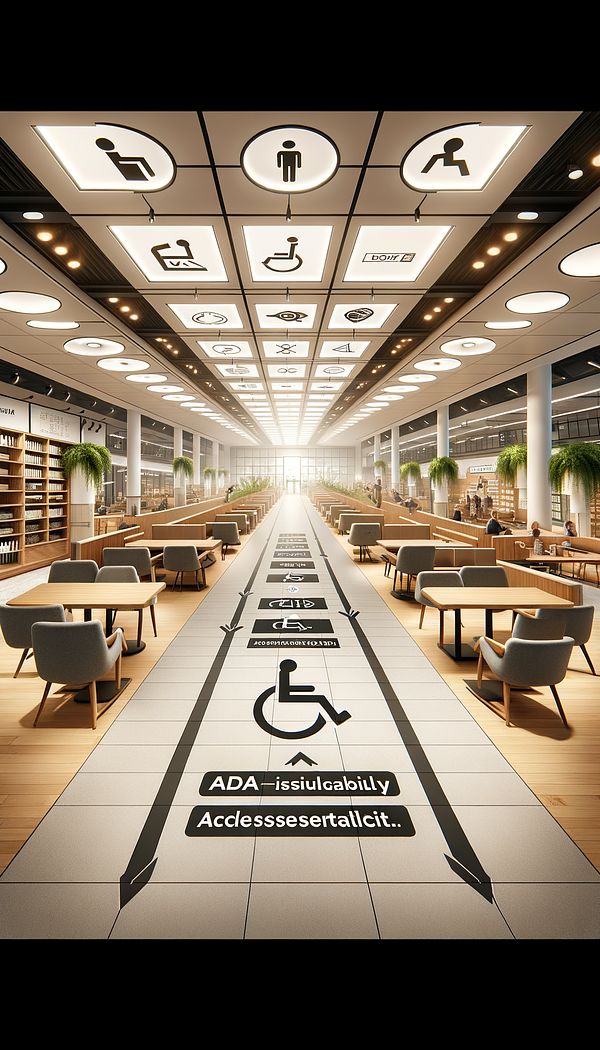What is ADA?
ADA refers to the Americans with Disabilities Act.
Description
ADA or the Americans with Disabilities Act is a civil rights law that prohibits discrimination against individuals with disabilities in all areas of public life, including jobs, schools, transportation, and all public and private places that are open to the general public. In the context of interior design, it plays a critical role in shaping spaces that are accessible, safe, and usable for everyone, regardless of their physical abilities.
The ADA sets forth guidelines and standards for accessibility in buildings and facilities. These standards cover a wide range of aspects, including but not limited to, the width of doorways, the height of counters, the presence of ramps and elevators, and the usability of restrooms and other facilities. For interior designers, adhering to ADA guidelines is not only a legal requirement but also an ethical and professional responsibility to create inclusive environments.
Functionality and aesthetics can go hand-in-hand when designing under ADA standards. With innovative solutions and thoughtful design choices, spaces can be both accessible and beautiful, serving the needs of all users without compromising on style or comfort.
Usage
For example, an interior designer working on a public library project would need to ensure that all areas, including shelves, reading areas, and restrooms, are accessible according to ADA standards. This could involve designing wider aisles, incorporating wheelchair-accessible seating, and ensuring that all signage is placed at appropriate heights and includes Braille for visually impaired visitors.
FAQs
-
How does the ADA influence interior design?
ADA influences interior design by requiring designers to follow specific guidelines and standards for accessibility, ensuring spaces are usable by individuals with a wide range of disabilities. This affects all aspects of design, from layout and space planning to material selection and furnishings.
-
What are some common ADA compliance requirements in interior design?
Common requirements include ensuring doorways are wide enough for wheelchair access, providing ramp installations where necessary, maintaining accessible restrooms and public facilities, and placing signage at accessible heights with Braille for the visually impaired.
-
Is ADA compliance mandatory for all interior design projects?
ADA compliance is mandatory for all public spaces and commercial facilities in the United States. While private residences are not held to ADA standards, many designers choose to incorporate accessibility principles to accommodate aging in place or future needs.
-
Can ADA compliance enhance the aesthetic appeal of a design?
Yes, incorporating ADA standards does not mean compromising on aesthetics. Designers can use innovative solutions and thoughtful material selections to create spaces that are both accessible and visually appealing, catering to all users equally.
Practical Application
When implementing ADA standards in design projects, it's important for designers to stay informed about the latest guidelines and ensure that all elements of their design—from the layout and space planning to the selection of materials and finishes—comply with ADA requirements. Partnering with accessibility experts or consulting with individuals who have disabilities can offer valuable insights into creating truly inclusive environments. Additionally, considering universal design principles can help create spaces that are even more accommodating and user-friendly for a broader audience.
-
Technical Terms38 articles
-
Space Planning & Layout134 articles
-
Decorating Principles & Elements330 articles
-
Accessibility & Ergonomics30 articles
-
Construction & Building86 articles
-
Gainsborough ChairA large and comfortable armchair of British origin, known for its open sides and upholstered seat and back.
-
Iron BedAn iron bed is a bed frame made primarily out of iron.
-
StockIn interior design, 'stock' refers to ready-made, mass-produced items available for immediate purchase.
-
BacksplatA backsplat is the central piece of wood located on the back of a chair, running vertically to connect the seat to the top rail.
-
BobecheA decorative element that surrounds the base of a candle or candelabra to catch wax drippings.
